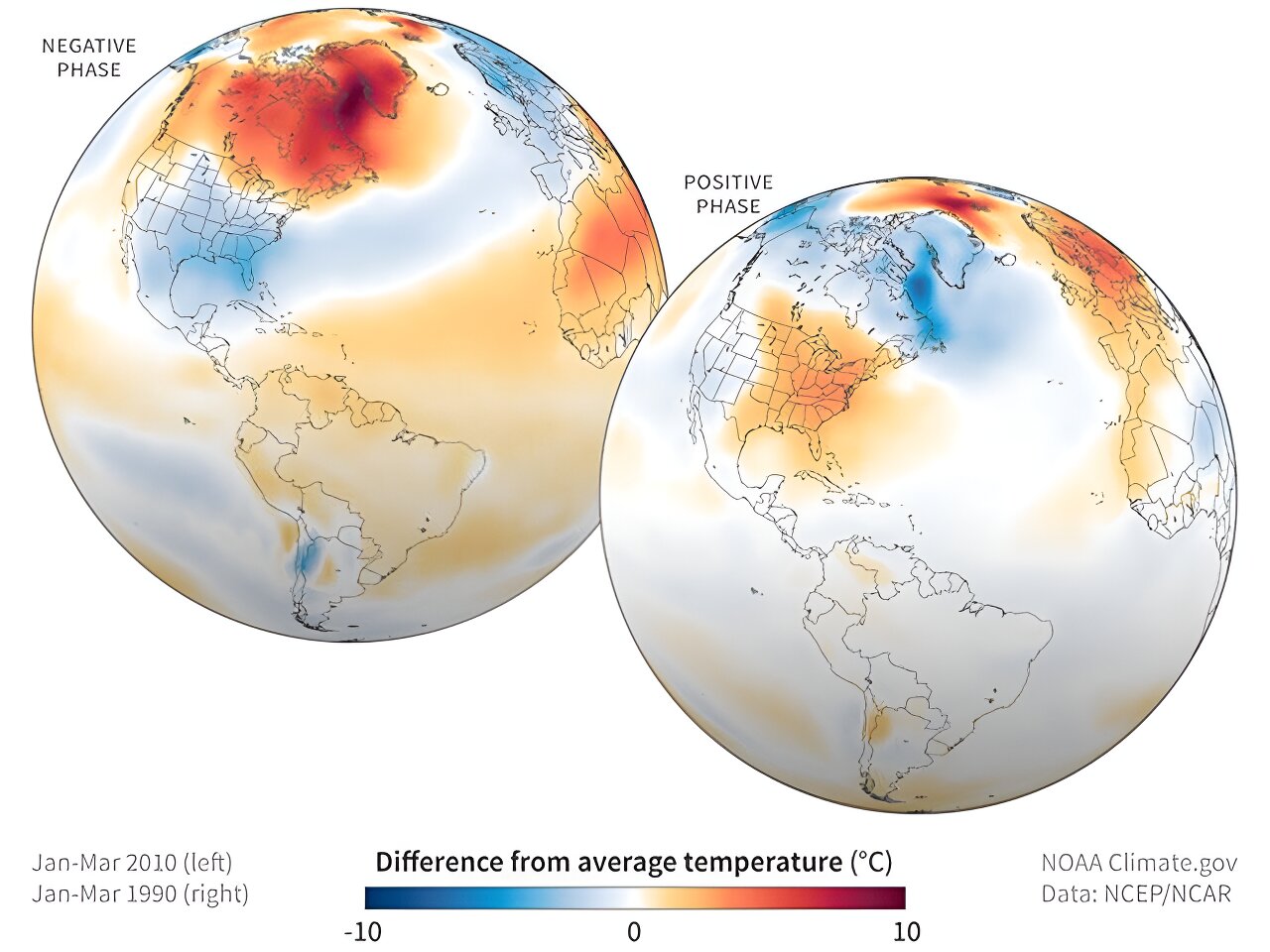North Atlantic Oscillation Contributes to 'Cold Blob' In Atlantic Oceanhttps://phys.org/news/2023-08-north-atlantic-oscillation-contributes-cold.html
A patch of ocean in the North Atlantic is stubbornly cooling while much of the planet warms. This anomaly—dubbed the "cold blob"—has been linked to changes in ocean circulation, but a new study found changes in large-scale atmospheric patterns may play an equally important role, according to an international research team led by Penn State.
Sea surface temperatures in the subpolar North Atlantic have decreased by about 0.7°F over the last century, and a trend toward a more frequent positive phase of the North Atlantic Oscillation (NAO) may have contributed significantly, the scientists reported in the journal
Climate Dynamics.
The NAO represents atmospheric circulation patterns involving a low-pressure system near Iceland and a high-pressure system near the Azores Islands, and it influences how westerly winds blow across the ocean. In the positive phase, both pressure systems are stronger than average, resulting in a stronger jet stream and a northward shift of the westerly winds, the scientists said.
"As the NAO becomes more positive, it intensifies the surface wind over the subpolar North Atlantic," said Li, who is also an associate of the Earth and Environmental Systems Institute and a co-hire of the Institute for Computational and Data Sciences at Penn State. "When we would like to cool a cup of hot coffee, we stir the surface, and it promotes heat loss. That's exactly what wind intensification is going to do to the ocean surface—it provides a direct cooling effect."
The team analyzed weather data and found the positive NAO has become more dominant during the past century, consistent with previous research. This shift could be due to warming of the tropical Indo-Pacific and sea ice loss in the Labrador Sea, according to the researchers, but its exact causes remain an open question.
"We know the atmosphere can not only force surface temperature change but also can passively respond to the surface temperature change itself—we call this forcing and damping," said Yifei Fan, a doctoral candidate at Penn State and lead author on the study. "Our model separates these two processes and can quantify the impact of wind on the surface turbulent heat flux and thus the resultant sea surface temperature changes."
The NAO alone could explain 67% of the sea surface temperature cooling trend, the scientists said. But other atmospheric patterns that have a warming effect may partially offset this, decreasing the overall impact of atmospheric circulation changes to 44%. Those findings are consistent with previous estimations from the group.
The findings suggest, the researchers said, that the NAO may have an equally important role in the cold blob as the Atlantic Meridional Overturning Circulation—or AMOC—ocean currents that carry warm water from the tropics north to the North Atlantic like a conveyor belt. Other studies have suggested the sea surface cooling is a sign the conveyor belt is weakening.
The results, however, should not be interpreted as a line of evidence against the role of oceanic processes, which also likely play a large role in the cooling, according to the scientists. But atmospheric circulation change should also be considered moving forward.
... "Once you have temperature cooling set up over the subpolar North Atlantic, it increases the instability in the atmosphere and favors the passage of storms that can come across the ocean basin and bring extreme weather events to North America and Europe," Li said. "This might add another layer of complexity to projections of future high-impact weather events and uncertainties to climate projections for heavily populated areas."
Yifei Fan et al,
North Atlantic Oscillation contributes to the subpolar North Atlantic cooling in the past century,
Climate Dynamics (2023)
https://link.springer.com/article/10.1007/s00382-023-06847-y
